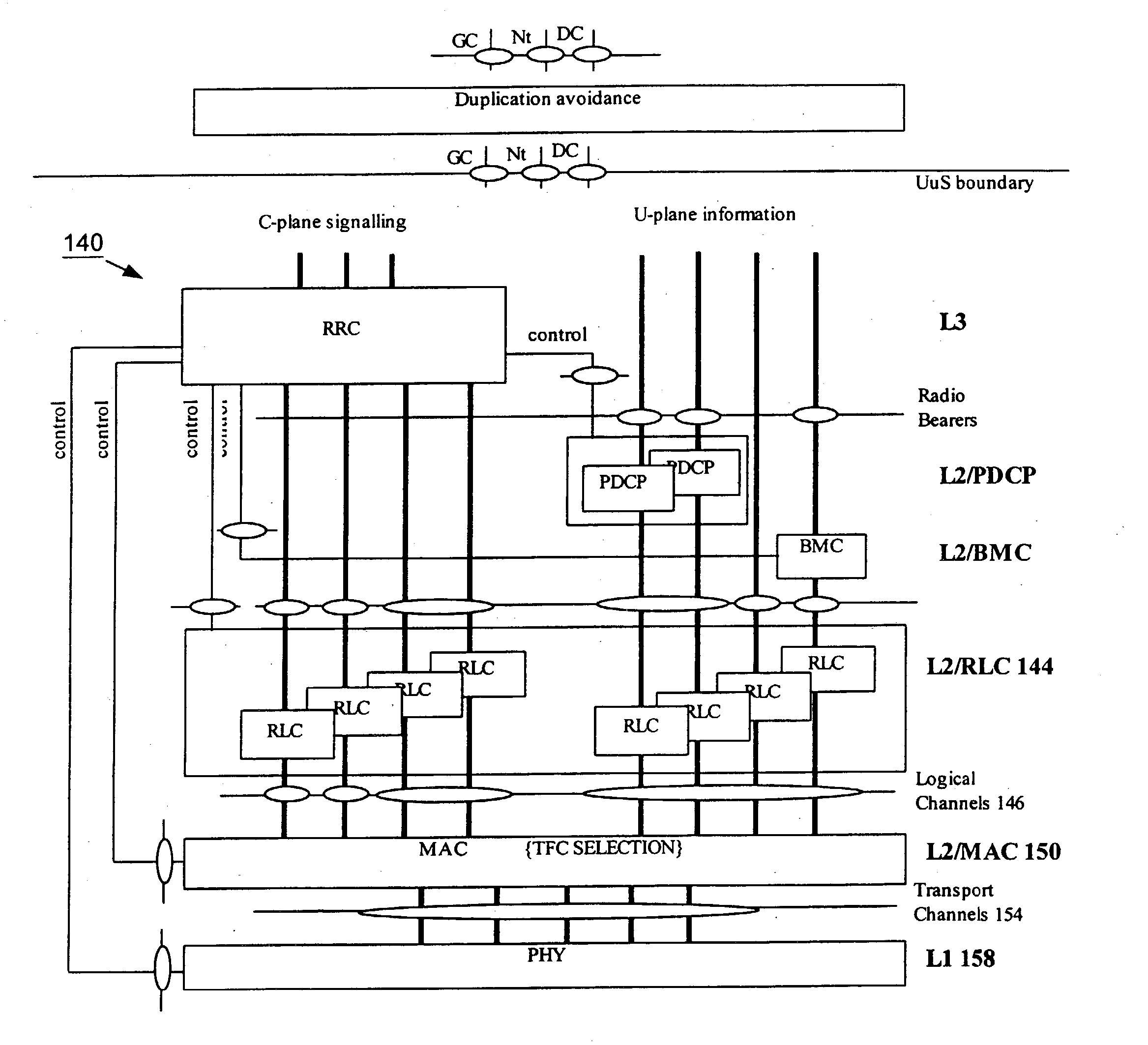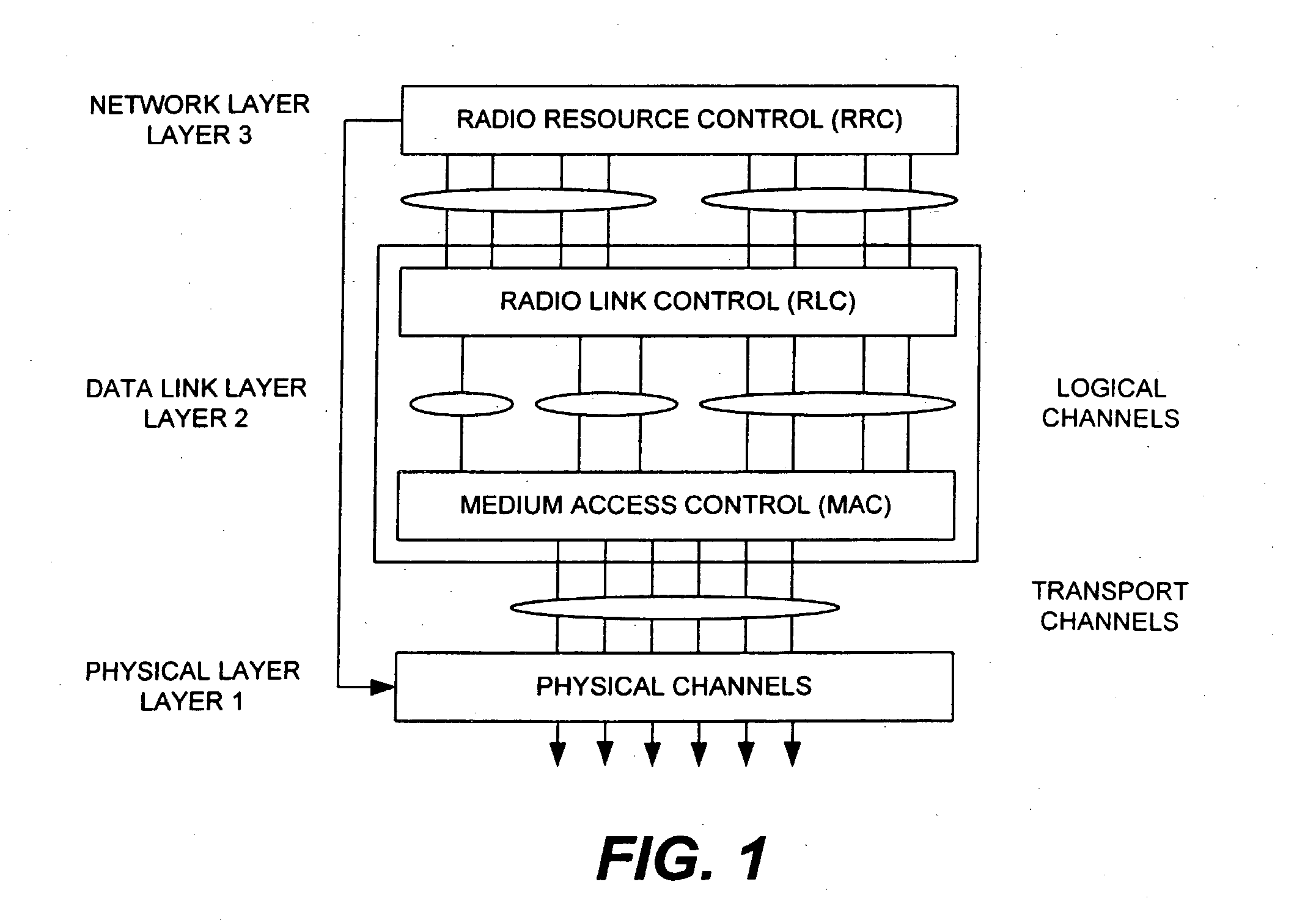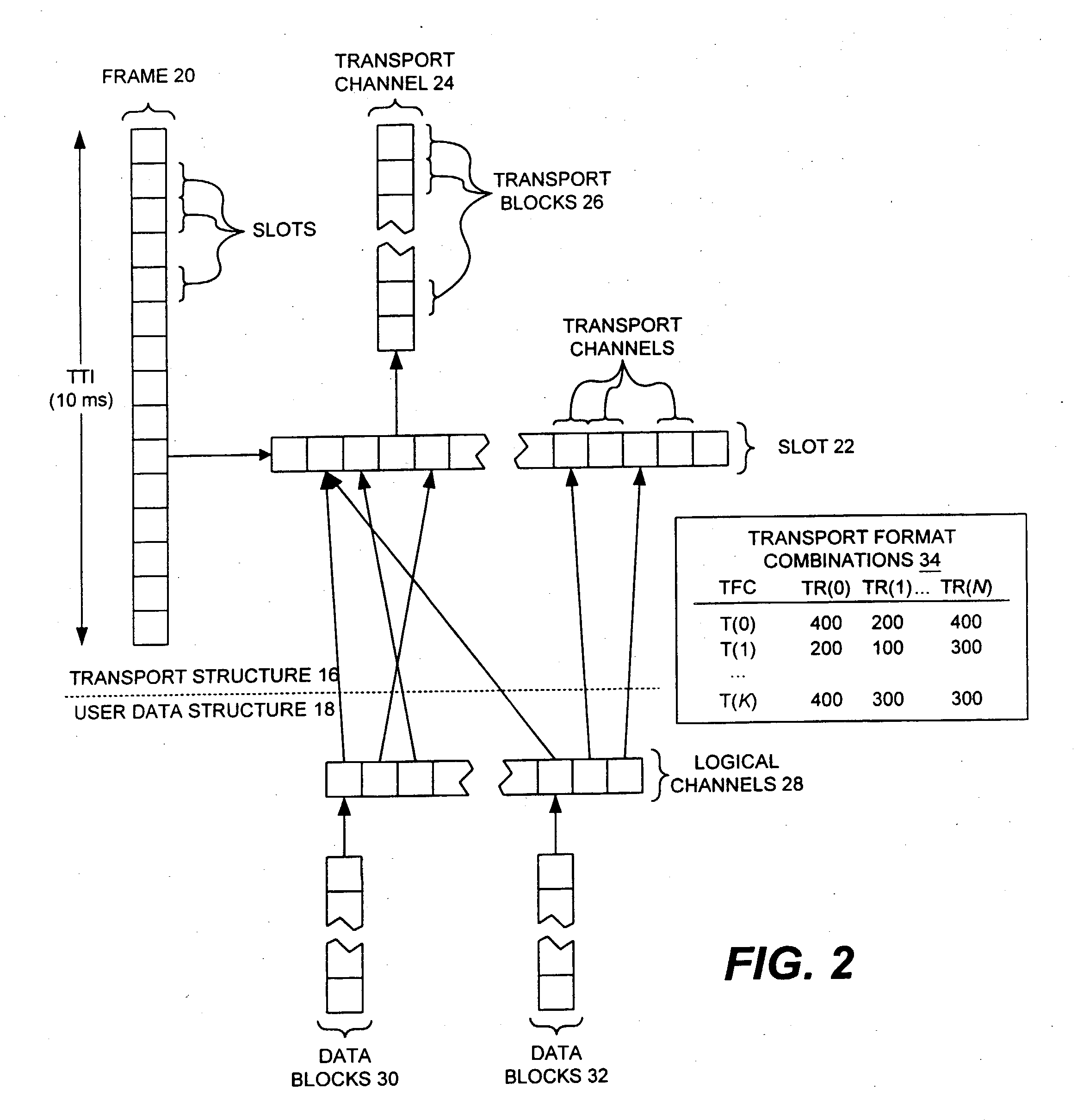Methods and systems for assignment of user data blocks for transmission over a network
- Summary
- Abstract
- Description
- Claims
- Application Information
AI Technical Summary
Benefits of technology
Problems solved by technology
Method used
Image
Examples
Embodiment Construction
[0129] Two detailed examples of the TFC selection algorithm are presented with reference to accompanying figures and tables. It is useful to first review the FIGS. 7 and 8, and then to study the tables and accompanying text. The first example follows the TFC selection algorithm with the baseline transfer channel routine, but the second example follows the TFC selection algorithm with the transport channel variant routine.
Example Using Baseline Transfer Channel Routine
[0130] FIG. 8 depicts a mapping 810 between a series of logical channels 820 and two transport channels 830.
[0131] Logical channel 822 is logical channel "0" (or "L(0)"), and has a priority of 1 and a buffer occupancy of 200. (As a reminder, the buffer occupancy, "BO", is the amount of user data that needs to be transmitted.) Logical channel 823 is logical channel "1" (or "L(1)"), and has a priority of 3 and a buffer occupancy of 500. Logical channel 824 is logical channel "2" ("L(2)"), and has a priority of 4 and a buf...
PUM
 Login to View More
Login to View More Abstract
Description
Claims
Application Information
 Login to View More
Login to View More - R&D
- Intellectual Property
- Life Sciences
- Materials
- Tech Scout
- Unparalleled Data Quality
- Higher Quality Content
- 60% Fewer Hallucinations
Browse by: Latest US Patents, China's latest patents, Technical Efficacy Thesaurus, Application Domain, Technology Topic, Popular Technical Reports.
© 2025 PatSnap. All rights reserved.Legal|Privacy policy|Modern Slavery Act Transparency Statement|Sitemap|About US| Contact US: help@patsnap.com



